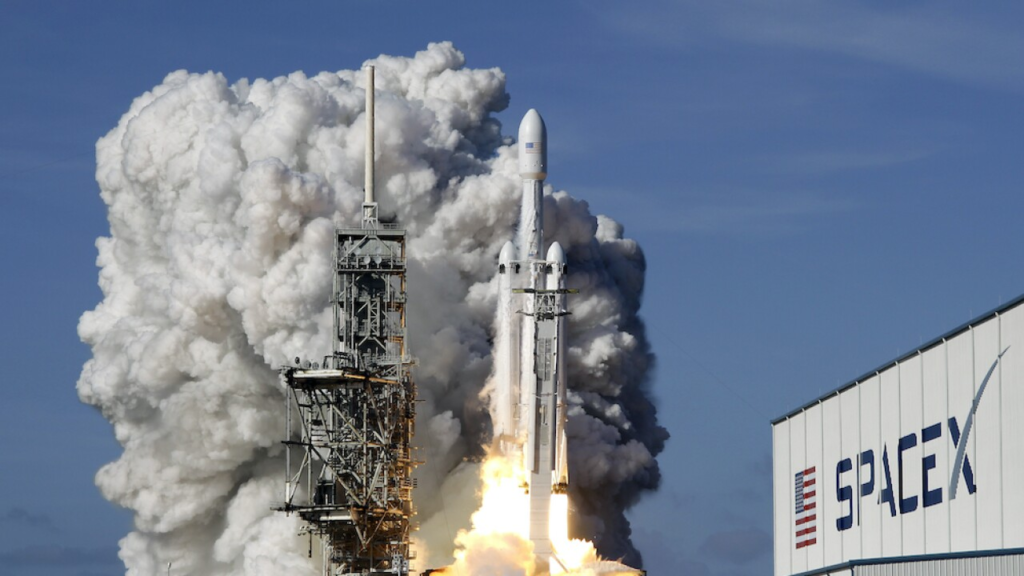Introduction
SpaceX, a leading force in private space exploration, has announced a delay in the launch of its Polaris Dawn mission. Originally set for early Wednesday, this launch was postponed due to unfavorable weather conditions in the splashdown zones off the coast of Florida. This decision reflects SpaceX’s commitment to ensuring the safety and success of its missions while navigating the complexities of spaceflight logistics.

Mission Overview
The Polaris Dawn mission is part of SpaceX’s ambitious Polaris Program, designed to push the boundaries of private space exploration. This mission aims to conduct scientific research and test new technologies in low Earth orbit. The Polaris Dawn mission is a pivotal step in demonstrating the capabilities of private space travel and advancing our understanding of space environments.
Reasons for the Launch Delay
The delay was primarily caused by adverse weather conditions forecasted for the splashdown areas, which are crucial for the safe recovery of the spacecraft. High winds and rough seas were expected, presenting significant risks to the recovery process. SpaceX decided to postpone the launch to ensure that all aspects of the mission, including recovery, could be carried out safely and effectively.
Technical Aspects of Falcon 9
The Falcon 9 rocket, a cornerstone of SpaceX’s launch capabilities, was prepared for the Polaris Dawn mission. Known for its reliability and reusability, the Falcon 9 rocket has been instrumental in numerous successful missions. Its advanced engineering and first-stage recovery technology are central to SpaceX’s efforts to make space access more affordable and frequent.
Impact on Polaris Dawn Mission
The postponement of the Polaris Dawn mission is a temporary setback but a necessary precaution. SpaceX is working to reschedule the launch, taking into account improved weather conditions and other operational factors. This delay will not affect the mission’s objectives but does require adjustments to the launch timeline.
Handling Launch Delays
SpaceX is well-equipped to handle delays through its established protocols. The company has faced and overcome various challenges, including technical issues and weather-related delays. By addressing these issues proactively, SpaceX ensures that each mission adheres to the highest standards of safety and success.
Objectives and Significance
The Polaris Dawn mission is significant for several reasons. It aims to conduct important scientific experiments in microgravity, test new space technologies, and contribute to our knowledge of human spaceflight. The mission also plays a crucial role in demonstrating the viability of private space missions and supporting future commercial space ventures.
Detailed Timeline
Preparations and Planning: Preparations for the Polaris Dawn mission began months in advance, involving extensive testing of the Falcon 9 rocket and training of the mission crew. This phase was crucial to ensure the readiness of all systems and personnel.
Initial Launch Schedule: The launch was initially scheduled for August 28, 2024. The Falcon 9 rocket was in position at Kennedy Space Center, and all pre-launch procedures were on track.
Weather Forecast Update: On August 27, 2024, SpaceX received an updated weather forecast indicating unfavorable conditions for the splashdown zones. This forecast prompted the decision to delay the launch to ensure safety.
Rescheduling and Future Plans: Following the delay announcement, SpaceX began the process of rescheduling the launch. The team continues to monitor weather conditions and will adjust the launch timeline accordingly to ensure a successful mission.
Expert Opinions
Dr. Eric Berger, Senior Space Editor at Ars Technica, commented, “SpaceX’s decision to delay the Polaris Dawn launch underscores their commitment to mission safety. Space exploration often involves dealing with unforeseen circumstances, and SpaceX’s proactive approach reflects their dedication to ensuring successful outcomes.”
Dr. Lori Glaze, Director of NASA’s Planetary Science Division, added, “Weather conditions are a critical factor in space missions. SpaceX’s choice to postpone the launch due to adverse weather is a prudent measure to safeguard the mission and crew. Such decisions are essential for the long-term success of space exploration.”
For Regular News and Updates Follow – Sentinel eGazette
Sources and References
FAQs
- What caused the delay in the Polaris Dawn mission?
The Polaris Dawn mission was delayed due to unfavorable weather conditions forecasted for the splashdown areas off the coast of Florida. High winds and rough seas posed risks to the recovery operations, prompting SpaceX to postpone the launch. - When was the Polaris Dawn launch initially scheduled?
The launch was initially scheduled for August 28, 2024. However, due to the adverse weather forecast, SpaceX decided to delay the launch to ensure mission safety. - What are the primary objectives of the Polaris Dawn mission?
The Polaris Dawn mission aims to conduct scientific experiments in microgravity, test new space technologies, and advance knowledge in human spaceflight. It is also a key part of SpaceX’s efforts to demonstrate the feasibility of private space missions. - How does SpaceX handle launch delays?
SpaceX handles launch delays through established protocols, including rescheduling based on updated weather forecasts and other operational factors. The company prioritizes mission safety and success, addressing challenges proactively. - What impact does the weather delay have on the mission timeline?
The weather delay requires adjustments to the mission timeline, including rescheduling the launch. SpaceX continues to monitor weather conditions and will proceed with the launch when conditions improve to ensure a successful mission.